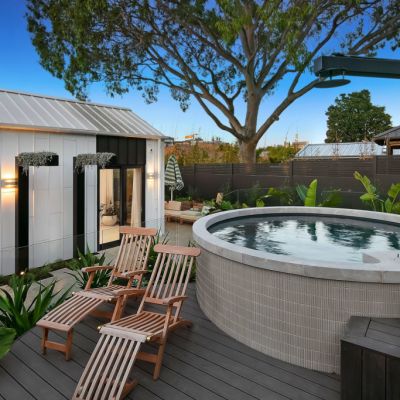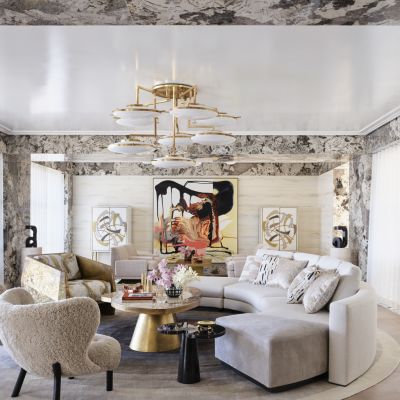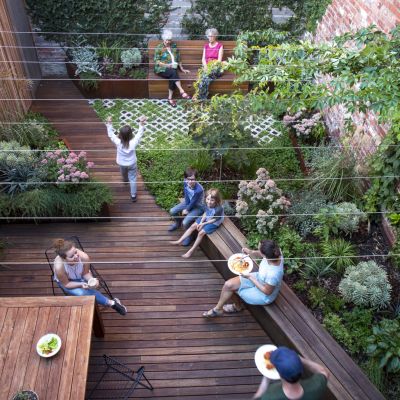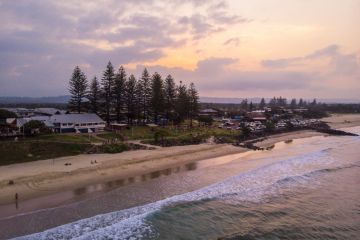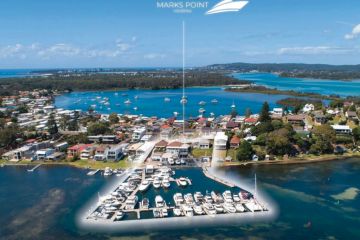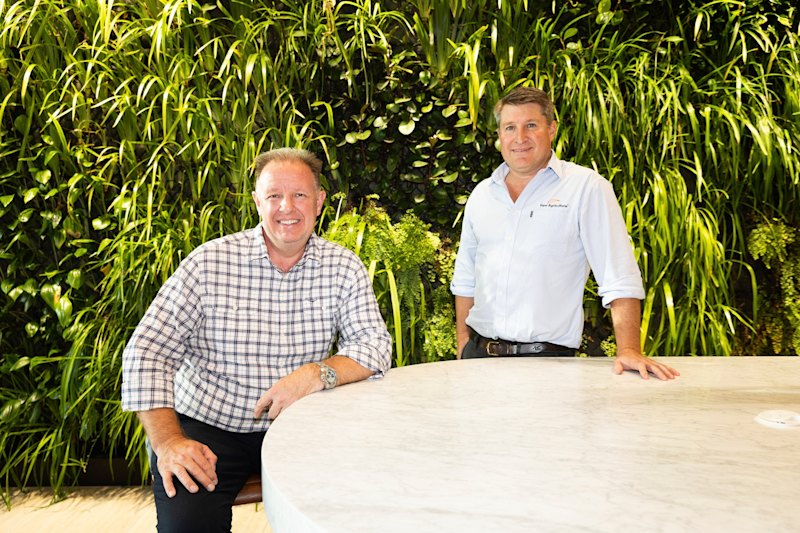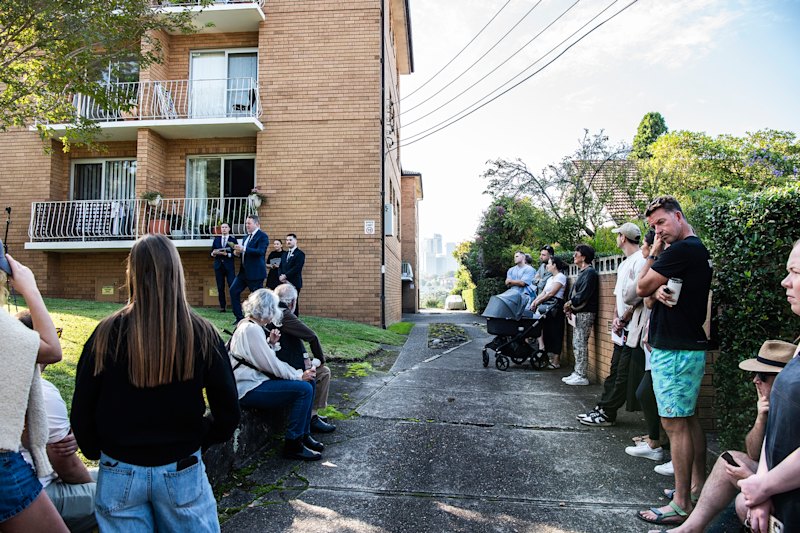5 outdoor trends to inspire a garden refresh in 2024
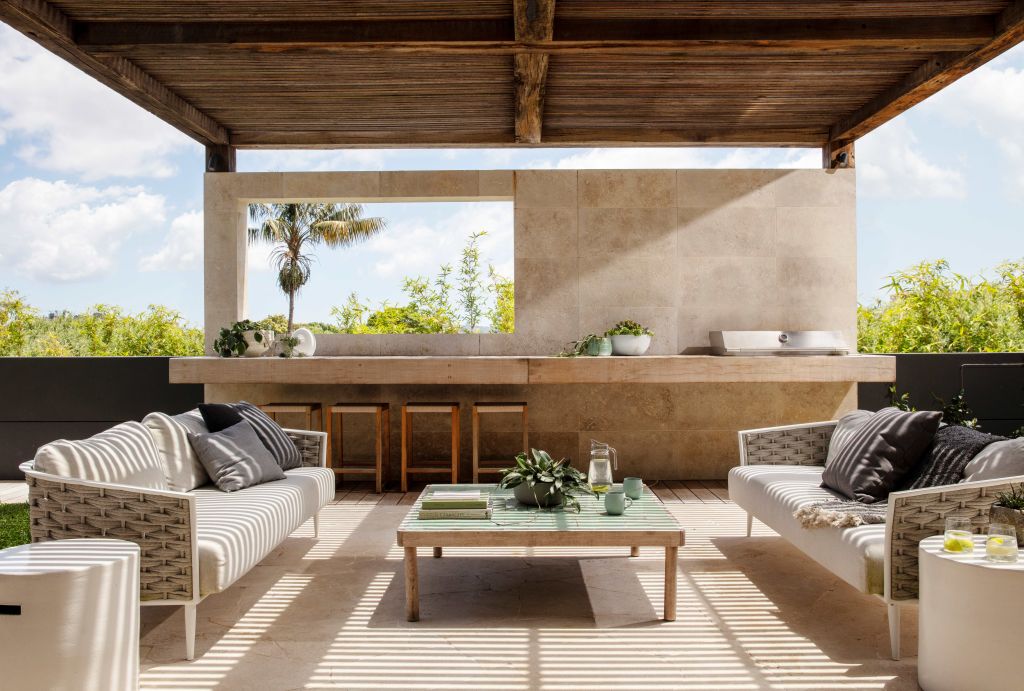
If you’re looking for aesthetic inspiration to refresh your outdoor space, this is what the experts say are the biggest trends we’ll see in 2024.
1. Mediterranean colours and finishes
Mediterranean style is being used in garden design in a number of ways, making our outdoor areas feel like we’re on a European holiday.
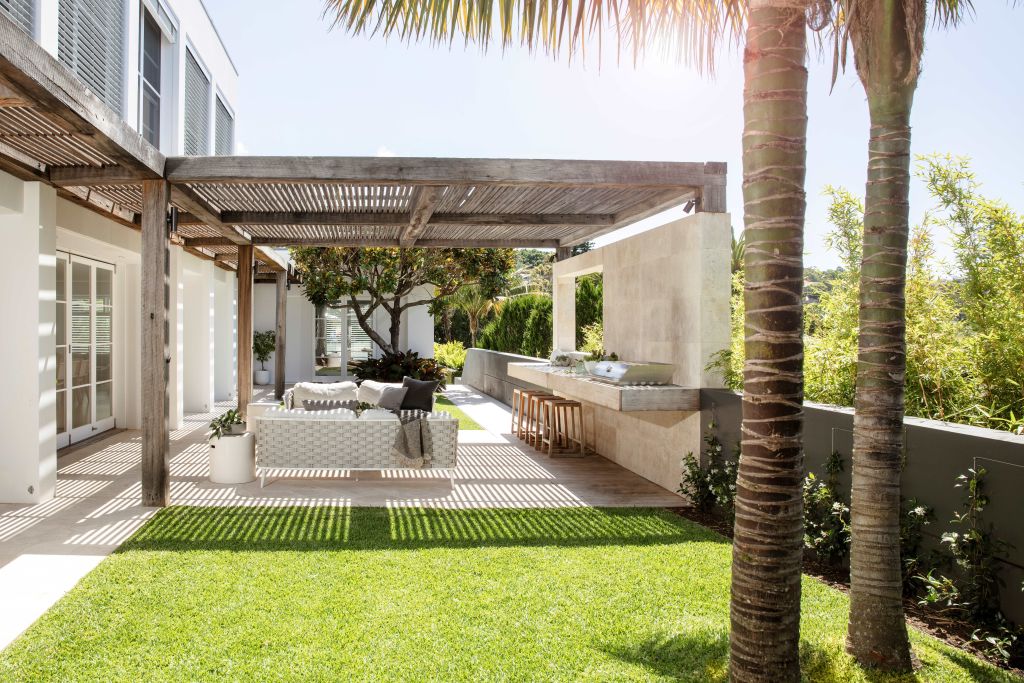
“In essence, it’s a mixture of natural stones, weathered rustic timbers and really soft, rounded renders in white tones,” says landscape designer and Landart founder Matt Leacy.
This style is all about balancing neutrals with rich, warm and earthy colours.
“We’re warming everything up,” says landscape designer Adam Robinson of Adam Robinson Design.
“Everything’s got more of a brown undertone. Even our white’s becoming a little bit more creamy. And our greys are going out.
“If we want those moody colours, it’s becoming a bit warmer with terracotta or brown.”
2. Outdoor living with resort vibes
“The sort of outdoor-in thing obviously has been happening for a while, especially in Australia – it’s kind of who we are,” says Keti Lytras, creative director at online homewares retailer GlobeWest. “But I think people are investing more in [the] outdoors.”
Robinson agrees, adding that “home’s a little sanctuary at the moment”.
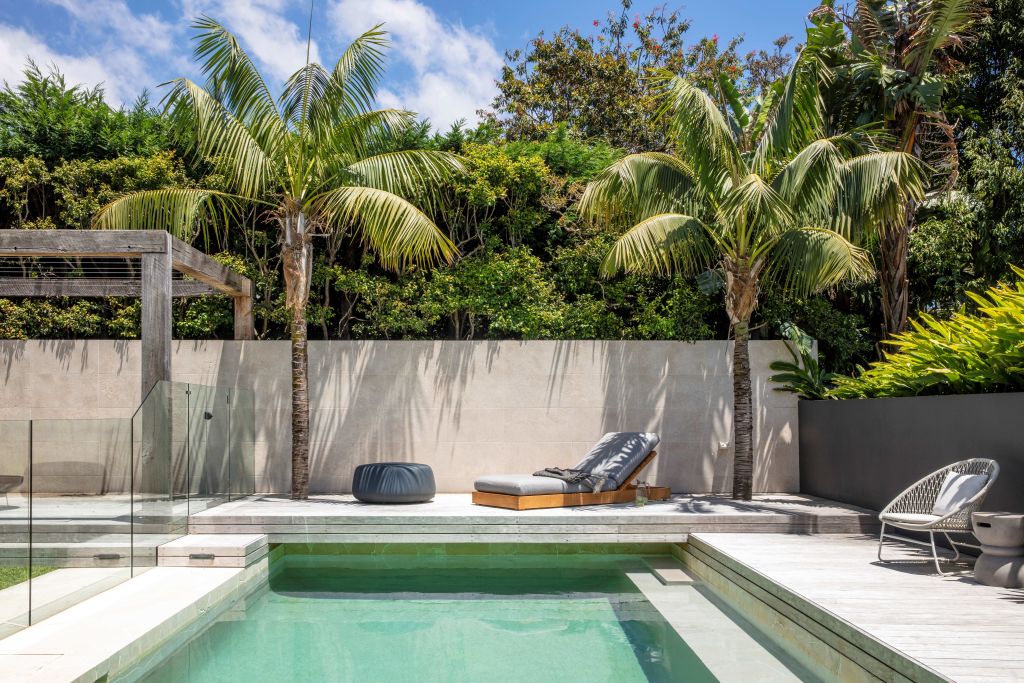
In practice, this looks like making our outdoor areas as useable and comfortable as possible through elements such as outdoor showers, plunge pools, fire pits and portable pizza ovens.
It also means creating comfy seating arrangements (like you’d find in your living room) with lush outdoor sofas and lounges, rugs, coffee tables and side tables.
Lytras believes this is all to create a resort or retreat feel at home, resulting from “a shift to really prioritising our wellbeing”.
As an example, she says a small outside space can be made into a beautiful nook where you can meditate, have a cup of tea in the morning, or enjoy an end-of-day cocktail.
“It’s so important to create spaces where you can really rest and be yourself,” she says.
3. Low-maintenance, drought-resistant plants
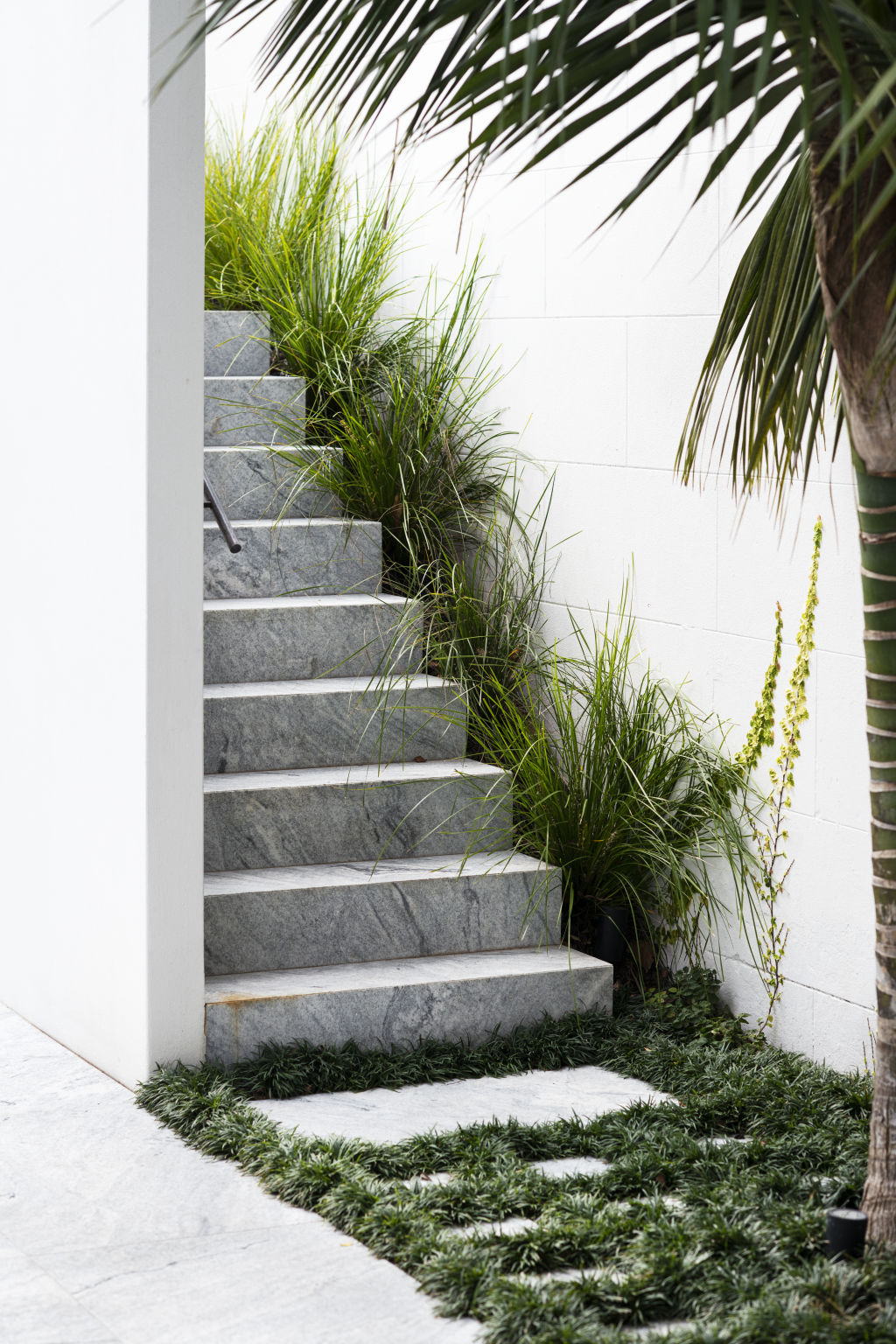
We’ve all heard the projections of a long, hot summer. The good news is that, alongside natives, plants such as olive trees and rosemary bushes make sense in a hot, dry climate.
“Clients are asking for very low-maintenance, native plants,” Robinson says. “I think we’re kind of pulling away from lush tropical and going into that … Mediterranean [style of plant].
“But I think we’ll go even a little bit drier. Cactuses have been popular for a while and I think that’s good because it’s pushing more people [towards] water-wise plants.”
He says designers are favouring smaller, fine-leaved plants over large ones.
Melbourne landscape designer Ian Barker says the preference for low-maintenance plants means fewer perennials and more evergreens are being used in gardens.
Instead of using perennials in 70 per cent of the space for a “naturalistic, free-flowing meadow garden”, he says people are now planting about 20 per cent perennials.
They “will come up and give you the real pop of colour”, he adds, “but for the rest of the year [the garden] just looks neat and tidy”.
To create this look, Barker suggests choosing a couple of your favourite plants and installing them in a wave, with perennials in the spaces between.
Leacy says smart irrigation systems that can predict weather patterns and adjust their settings accordingly are on the rise, and Robinson says clients are requesting water collection systems so they can conserve water and hydrate their gardens using nitrogen-rich rainwater.
4. Curved edges and organic shapes
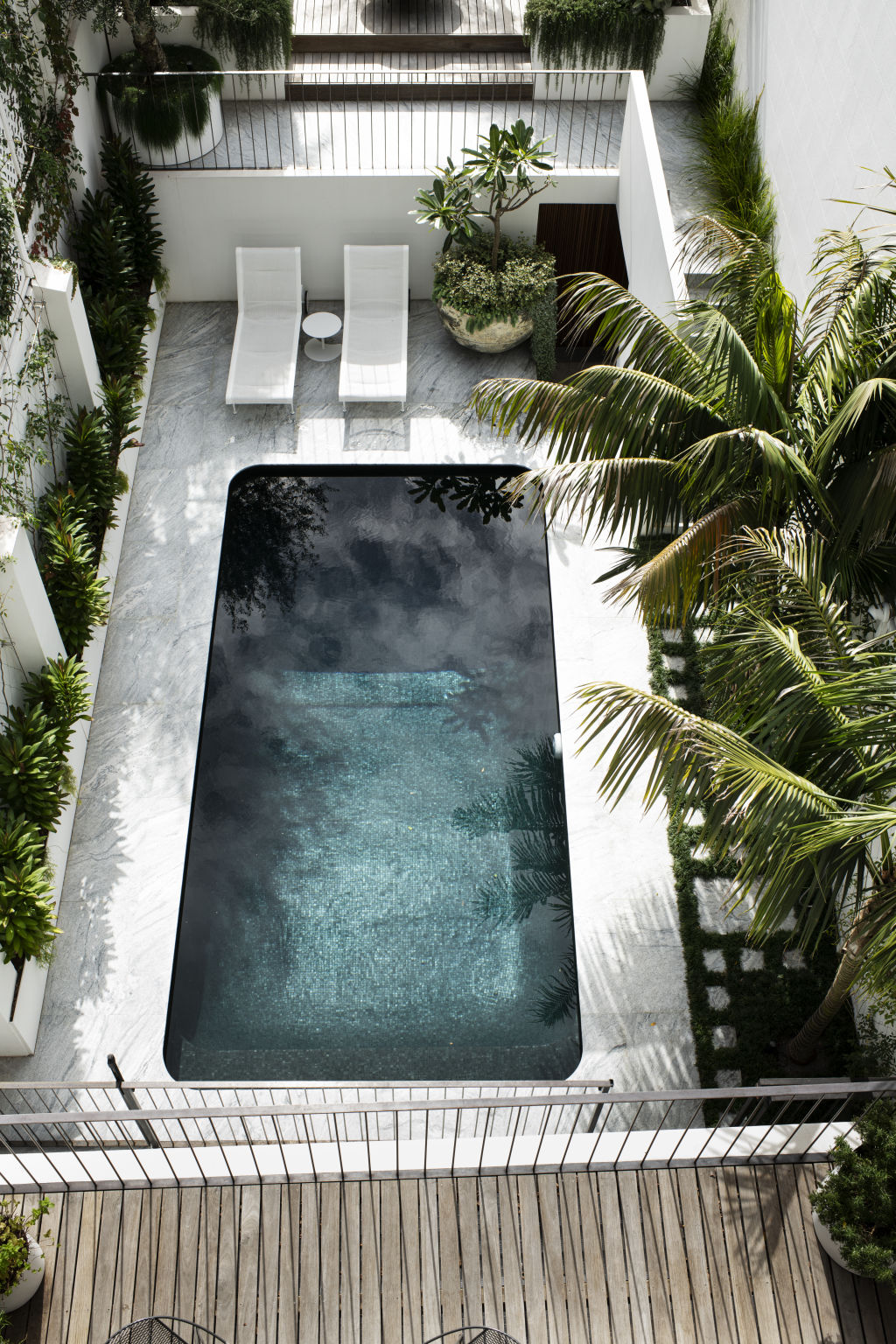
“We are seeing slightly more organic shapes coming into play,” says Barker, who predicts more use of rectangular shapes with rounded corners – like iPhones or retro radios – popping up more frequently in landscape design.
“And even if the swimming pools are rectangular in shape, [in] the steps or swim-outs or beach areas there’s the introduction of curves,” he says.
Barker is a fan of free-flowing, sweeping or wavy lines intersected with geometric shapes.
“So you’d structure your paving, your swimming pool, your al fresco … and then one half of the lawn will be straight and geometric and the other half of the lawn will have this beautiful wave,” he adds.
Robinson agrees that rounded edges are in, as are kidney-shaped pools.
He says there is a move away from glass fences “because it’s a little bit shiny-outdoors” and towards “doing a metal pool fence and allowing the plants to grow through the fencing so it blurs the lines of that hard and soft boundary.”
Also on the pool front, Robinson says sunken spas that have lockable lids and can be used hot or cold have become quite popular.
5. Layering and mixed textures
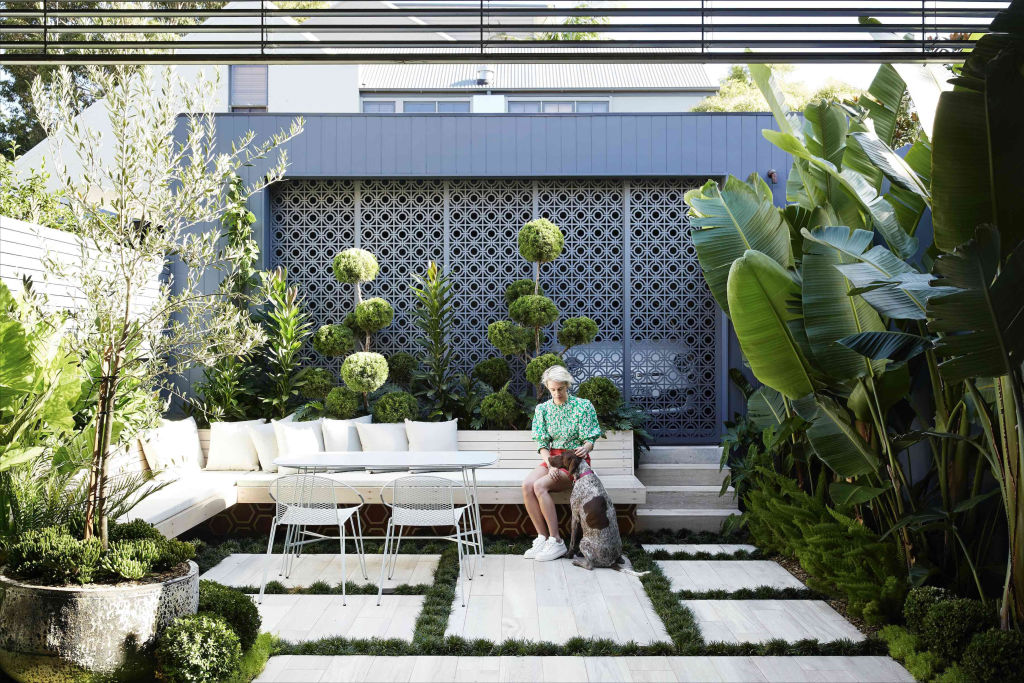
The experts say many of us are having fun mixing textures and creating depth.
“People are being a lot braver in how they layer things, colour-wise and texturally,” Lytras says. “You might have a sofa, for instance, that has a metal frame, roping and a beautiful coloured cushion, and then next to it, you’ve got a hard tiled side table with more of a glossy surface.”
She says concrete finishes and fibrestone – a mixture of fibreglass and crushed stone – are taking off as well.
Barker says we’re “getting back into micro-bricks and the smaller paving elements” in patterns such as herringbone and running bond, while Robinson suggests using gravel and looking at tiles as “a great way of bringing a bit of pattern, texture or colour outside”.
“I think there’s quite an eclectic mix going on at the moment,” says Leacy, who points to textured flooring, renders and tiles, plus interesting pots and earthy colours mixed with blues and greens.


We recommend
We thought you might like
States
Capital Cities
Capital Cities - Rentals
Popular Areas
Allhomes
More
